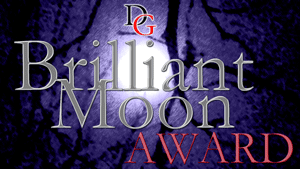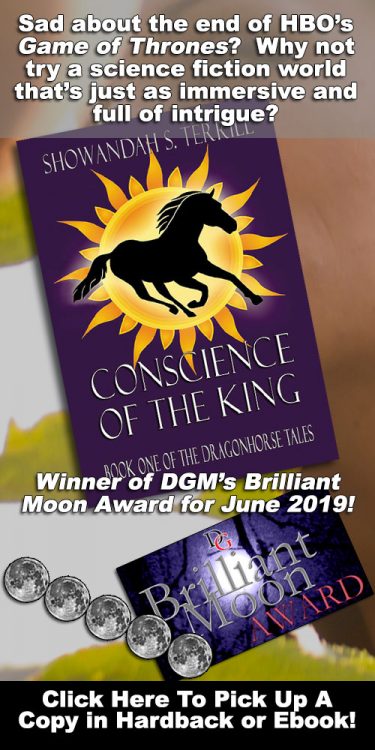 Author: Seth Grahame-Smith
Author: Seth Grahame-Smith
Publisher: Grand Central Publishing
Genre: Fantasy/Historical Fiction
Unique Elements: Vampire hunter, who is actually a vampire himself, fights the Undead menace throughout the 19th and 20th centuries to help protect America.
Series: Abraham Lincoln: Vampire Hunter
Release Date: January 13, 2015
Number of Pages: 416 pages
MSRP: $27
Discount Link:Click Here
Website: Click Here
Trailer/Video: Click Here
Purchase Site: Click Here
Reviewed by: J.T. Hanke
Final Score: 5 Moons (out of 5)
If you’ve been following DarkestGoth since we began, you know that I personally loved the film adaptation of Abraham Lincoln: Vampire Hunter. It seems like those critics that missed the point on this film failed to understand the premise of fantastic historic fiction…that the goal is not to tie into ones’ own preconceived notions, but to meet the facts that we currently have and fill in gaps with story arcs that are plausible and, moreover, interestingly insightful into a time and era that is often a mystery to the modern consumer. (When I watch an original film and then a remake of it, back-to-back, I find that I get so much more insight into the core story and its inner workings, because you’re seeing these two visions in such an interestingly overlaid manner. Speculative and/or fantastic historic fiction serves a very similar function, by giving a second take on factual events, it highlights things in very unexpected and startling ways.)

The fact that Grahame-Smith is one of a handful of novelists who’s been permitted to solely write a screenplay that was greenlit by a Hollywood studio is amazing and, for me, I adored that, like Babe Ruth, the film swung for the fences! (Obviously, this had to be carried out and fully realized by the director, Timur Bekmambetov, who’s directed the extremely impressive Wanted, as well as Vampire films, Night Shift & Day Shift, and who did a great job AL:VH.)
With The Last American Vampire, Grahame-Smith returns to the world of Abraham Lincoln: Vampire Hunter through the eyes of Henry, the vampire hunter who trained Abraham Lincoln and who originally gave Abe’s diaries to Grahame-Smith in the prior novel. (For those who haven’t read the first novel, Grahame-Smith injects himself as a would-be novelist who befriends the vampire Henry, while working at a convenience store.* Through that friendship, he is entrusted to share the tale of Abraham Lincoln to an unsuspecting world. It’s a powerful breaking of the novellic fourth wall, but I found it worked well and holds up as it’s used once more in this current novel.)
Now Grahame-Smith’s character has traded his life to be able to interview Henry for the follow up book. Starting in a rambling sort of way, that has stylistic homages to everything from the original Bram Stoker’s Dracula to Anne Rice’s Interview with a Vampire, the life of a Vampire that began in the ashes of the Lost Roanoke Colony and continues to the modern era unfolds. Along the way, the reader is greeted with new perspectives on Jack the Ripper, Mark Twain, Nikolai Tesla, Rasputin, Hitler, JFK, Rockefeller, and many others.
* No, before you ask, this is not a sequence out of Kevin Smith’s upcoming Clerks III, although it would be great if he put in an homage to this!
Story
The story of TLAV is quite compelling and, while a bit disorganized at times, tends to be so in an intentional way related to the methodology of an interview, popping mainly between a third person perspective compiled by the author and first person quotes from Henry. (The one exception to this was a number of times where, mysteriously, we’d switch from third person limited to third person omniscient and “head jump” into someone whose thoughts we—or the author–shouldn’t be able to know. While I found those parts to be distracting, they weren’t distracting enough to make me stop reading.)
The ending for any story–whether that be a fairy tale, a novel, or a film–is easily as important as the entire piece put together. (To this day, I despise the movie Limitless because 95% of the film was constructed to masterpiece specifications, and then a train wreck ending was slapped on by the director that showed no care for what the entire film had been building toward! That it was based on a novel that did not screw up the ending made it even worse!)
Fortunately, The Last American Vampire has an ending that’s quite fitting and powerful. Moreover, unlike most vampire tales, this book and its ending, make some pretty interesting comments on the modern superhero genre and asks, “What makes a superhero?” (Perhaps this unconventional perspective is why Grahame-Smith is actually slated to write the Lego Batman script for Warner Brothers.)
Dynamics
That author Seth Grahame-Smith is in love with Wikipedia is without a doubt, because so many nuggets of intrigue about so many lives and interpersonal connections throughout history could not have been discovered without this modern marvel.
I don’t say this to undermine Grahame-Smith’s art any more than a great chef’s craft should be undermined because he didn’t “create” the mushrooms he harvested and used in his recipe. In many ways, the author’s creative style in this series is reminiscent of a documentary filmmaker, who sees pieces of potential stories in the material before him and then pieces them together with great care. By fitting so many surprising factual elements together so expertly (including photos with cleverly leading subtitles), it makes the reader eager to investigate many of the historic figures to see how much he’s “making up.”
In truth, it’s shocking how little he’s making up (other than the core “hidden” plot points of the novel itself) and how cleverly and dynamically he’s worked the story’s fiction into all the facts. (Of course, it should also make you even more leery of trusting the news, when you see how convincing a fiction can be forged in this manner.)
Not only did I find myself swept along by Grahame-Smith’s dynamic interactions between characters and events throughout, but I found myself spending hours “wikipedia-ing” things like the lost Colony of Roanoke, Virginia Dare, Jack the Ripper, Rasputin, and so much more. Not since the book, Ready, Player One, have I voluntarily spent as much time in glorious nerdy research as I have during my reading of this book.
Gothic Fit
One of the key elements about the Gothic perspective is the willingness to reexamine things from angles that many others might avoid. We don’t mind using death, mysticism, and/or fantasy as lenses to explore the real world and, in fact, prefer to use things that may make others a little squeamish, especially if it also makes them think outside their normal boundaries. In this regard, The Last American Vampire is very willing to go all the way. Not surprisingly, you can also take that to mean that there is quite a lot of blood and gore in this book, but, unlike a cheap B-slasher film or pulp horror novel, it’s not there for the sake of titillation or excitement, but, instead, for the sake of realism and integrity to the story being told.
If I were to compare the “feel” of this novel to any modern works in culture it would be a combination of Dexter–with the killer who only kills the evil and whose choices of when to spare a life often lead to most of the major plot twists–and the New 52 version of Batman–an investigator and vigilante who’s seen too much and wants to retire, but is pulled back into the grime repeatedly by his sense of duty.
Closing Thoughts
I really enjoyed The Last American Vampire. In fact, I think I enjoyed it more than Abraham Lincoln: Vampire Hunter, because it was permitted so much more scope and over a longer period of time. What I loved even more than the novel itself was that, when I was done reading, I was left with a pleasure rarely bequeathed by fiction: a greater appreciation and fascination of our actual history. To anyone who’s willing to shed their perspective on what “actually” happened and take a look at what “might have” happened, you should find this book to be quite intriguing!
If you do give this one a shot, leave your comments below with what you thought of it and whether you agree with our score!
Story: 4.5 Moons (out of 5)
Dynamics: 5.0 Moons (out of 5)
Gothic Fit: 5.0 Moons (out of 5)
Final Score (not an average): 5.0 Moons (out of 5)
![]()


March 5, 2015
You might want to spell Seth’s name right before you give all the credit for the book to Wikipedia.
March 11, 2015
Actually, inspiration and credit aren’t the same thing. All artists require inspiration, they are then credited with what they do with it. Our review clearly shows our opinion on Grahame-Smith’s talent and credits him for all of it. (Thanks for pointing out the only time we misspelled Grahame-Smith’s name. It’s now been corrected!)